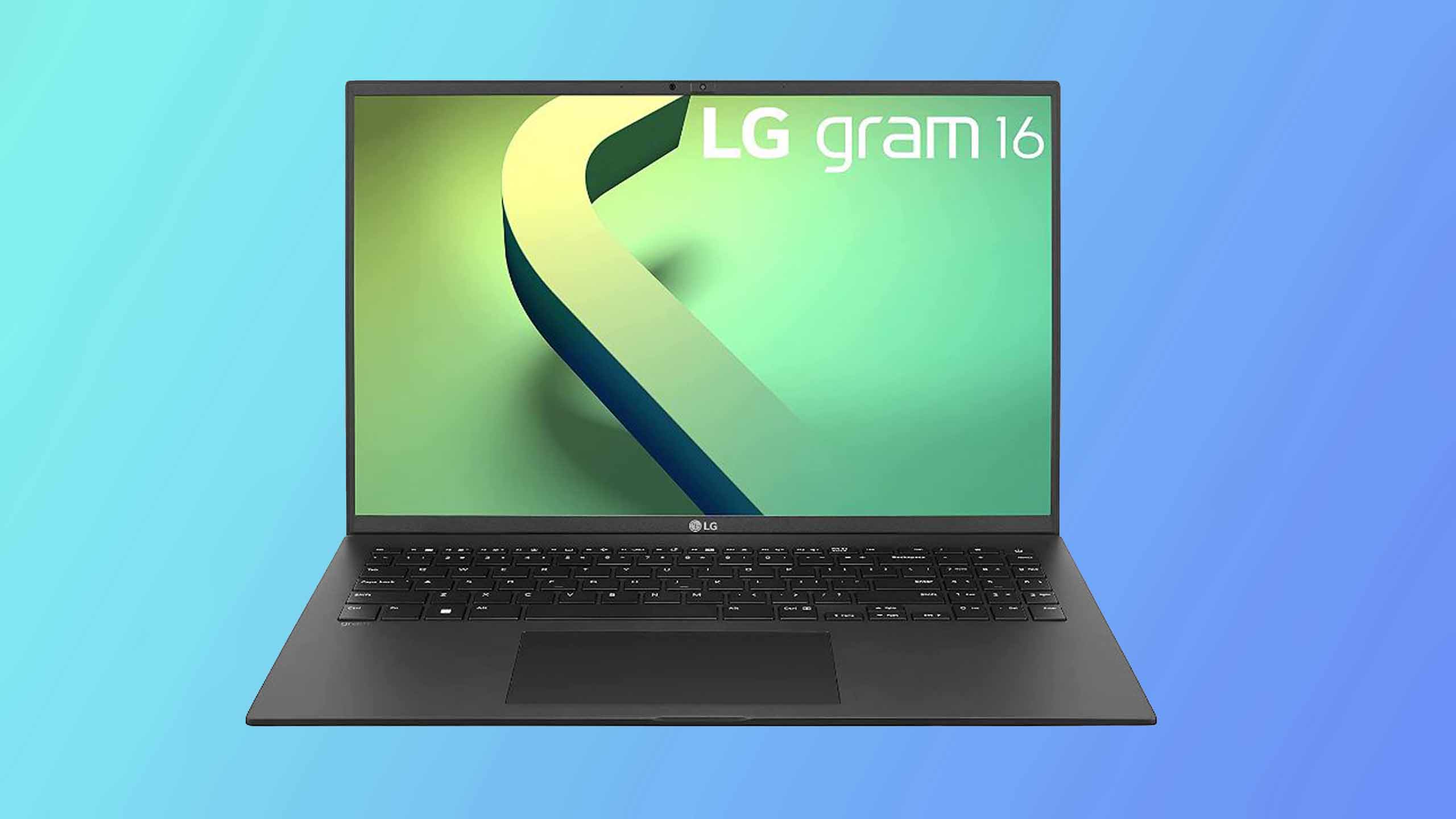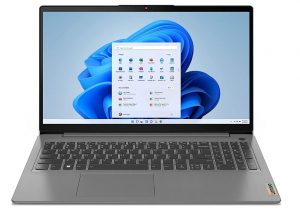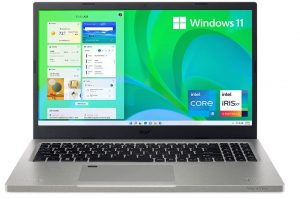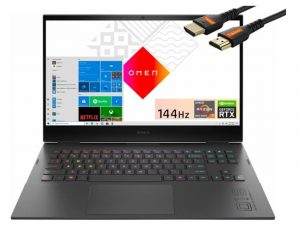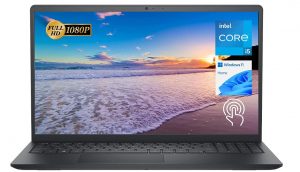Looking for the best laptop for Exocad DentalCAD 3.0? You have come to the right place!
The Exocad DentalCAD software is a full-featured computer-aided design (CAD) package developed specifically for the technical workflow in dental laboratories. This system allows you to work according to your method and achieve the best results possible.
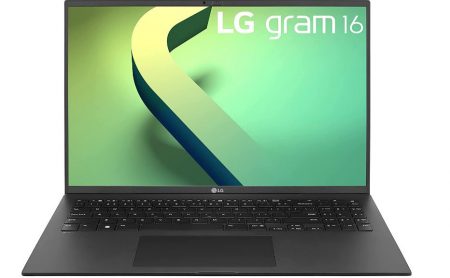
The LG Gram 16 comes with the 12th generation Core i7 CPU and delivers excellent performance in applications like Exocad DentalCAD that demand a powerful CPU.
It has a large IPS display to see every detail or shape you draw in the Exocad software in its full glory. Moreover, 16GB DDR4 RAM and 256GB NVMe make it lightning fast to open and switch between different programs.
Exocad DentalCAD is constantly evolving to become even more adapted to the needs of dental professionals. This tool helps technicians work quickly and efficiently, ensuring excellent results due to its innovative approach.
Reviews of the Best Laptops to Use the Exocad DentalCAD 3.0 Software
1. LG Gram 16 – Overall Best Pick
LG managed to pack the Gram 16 with all the features you would expect to find on much heavier full-sized devices.
Despite it being a light laptop, including a numeric keypad, a good selection of ports, respectable battery life, and enough power to fly through the majority of productivity tasks.
The body of the Gram 16 is made of magnesium; however, its lid is plastic.
Although that reduces weight well, if you hold the sides and apply enough torque, the base will flex and grunt as the lid starts to distort significantly.
There is also what appears to be some flex when you press the middle of the keyboard.
Overall, there isn’t much evidence to suggest that Gram 16 won’t handle the rigours of frequent use despite the flexing.
It has passed MIL-STD 810G testing for resistance to stress, extreme heat, dust, and—in an interesting twist—salt fog penetration.
As a result of its small size, the Gram 16 has a surprising number of ports, including Thunderbolt ports, USB-C PD, DP 1.4, HDMI 2.1 video output, 2 USB-A 3.2 Gen 2 ports, 3.5mm headphones, microSD card readers, Kensington lock slots, and 2 USB-A 3.2 Gen 2 ports.
The 2022 LG Gram 16 is the same size as the 2021 model, measuring 355 x 242 x 17mm, and it is once again only offered in fairly uninteresting colours of black or grey.
The LG Gram 16’s display is beautiful, with thin bezels on two of the four edges that enable the screen to almost reach the very ends of the casing for a premium aesthetic.
Overall the picture is fantastic, with lots of clarity, brilliant colours, and superb contrast, making it ideal for both working on spreadsheets and watching a little Netflix in the evening.
LG has unveiled the +View external display, made to work with the Gram 16, for people who require more screen space.
The portable display pairs with the laptop via USB-C and can be used either vertically or horizontally.
The keyboard functions nicely despite the above-mentioned flex.
You can continue working even when the lights go out thanks to the keys’ solid and positive action and a respectable amount of travel.
Anyone who undertakes substantial number crunching will benefit greatly from the numeric keypad.
The touchpad’s big size (132 x 83mm), tactile surface, and satisfying click-action make it outstanding overall.
The new 1080p webcam outperforms the 720p one found in the 2021 Gram 16 in every regard.
In low-light situations, the new webcam produces a highly sharp image with outstanding colour consistency and an astonishing lack of noise.
Unfortunately, LG has also eliminated the fingerprint reader that was a part of the power button on the previous model while still enabling Windows Hello IR for face recognition.
Unlike some alternatives, there aren’t any obvious speaker grilles on either side of the keyboard, but the 1.5W speakers with DTS:X give a surprisingly rich audio experience.
With a reasonably balanced output and noticeable bass to finish it off, it’s more than adequate for viewing YouTube videos or even catching up on Netflix episodes.
A sleek new Intel Core i7 1260P with 16GB of DDR5 memory and 256GB of SSD storage powers the LG Gram 16.
The Gram 16 performs quickly and accurately in real-world situations.
It starts up quickly from a cold start and can run numerous apps simultaneously on the screen, including Chrome, Slack, Microsoft Word, MS Excel, etc
However, when it comes to processing-intensive activities like gaming and video editing, it starts to struggle.
You might anticipate that the LG Gram 16’s battery life would be subpar given how light and thin it is.
The LG Gram 16’s 80Wh battery lasted an outstanding 16 hours and 42 minutes while playing a looped 720p film at 120nits screen brightness.
According to USB-C power delivery, a complete charge may take up to one hour and forty-five minutes.
The included 65W USB-C PD charger produced 33% charge in 30 minutes.
The LG Gram 16 (2022) is an engineering wonder with a lightweight chassis that doesn’t sacrifice durability and all-day battery life.
2. Lenovo IdeaPad 3i – Best Value Laptop for Exocad DentalCAD 3.0
The IdeaPad 3i’s appearance isn’t particularly noteworthy, its basic elements are excellent for a budget laptop.
Despite being entirely made of plastic, the physical structure is solid and lacks any flex or weak places, which is crucial at this pricing point.
The entire device is 4.8 pounds in weight and measures 0.98 by 14.1 by 9.8 inches (HWD).
That’s fairly small and slender, even if it doesn’t quite equal the most expensive and svelte gaming laptops.
The IdeaPad 3i performs admirably when measured against other low-cost computers like the Dell G5.
The screen’s full HD resolution and 120Hz refresh rate should appeal to gamers.
You probably won’t be able to play most games at 120 frames per second, but still, some less demanding multiplayer games on lower settings may do.
The display is otherwise very typical. The small bezels contribute to the elegant appearance and the small footprint while keeping a 15.6-inch screen.
On the top bezel is a 720p webcam that can be shuttered for privacy using a tactile slider switch.
The keyboard’s build quality is just as strong as the chassis’s. The keyboard of the IdeaPad is just as pleasant as those that Lenovo is known for.
The keys are attractively carved and have just the right amount of travel to avoid feeling flimsy or unstable.
Additionally, they have a charming glow from a soft blue backlight that illuminates them.
The lighting cannot be changed in colour; however, I think the cool blue lighting looks nicer than some gaming rigs that use gaudy all-red lighting.
Less can be said about the touchpad, yet it is reliable and quick. However, rather than being positioned in the middle, it is situated farther to the left of the chassis.
The ports on the left side of the chassis are a USB 3.1 Type-A port, a USB-C port, an HDMI connection, an Ethernet port, and a headphone jack.
There is only Battery life is one area where the IdeaPad excels, matching or outperforming all competitors.
The battery life will significantly decrease if you play games when the device isn’t plugged in, but for everyday use, it should last you most of the day.
Rapid Charge is another feature offered by Lenovo that, in my experience, charges laptops more quickly.
This model comes with a 512GB solid-state drive, an Intel Core i5 processor, 8GB of memory, and the Nvidia GeForce GTX 1650 GPU.
In the grand scheme of things, the latter’s capacity is a little low for contemporary gaming, but it’s not awful for a cheap gaming laptop.
3. Acer Aspire Vero – Best Budget Laptop for Exocad Users
The Acer Aspire Vero stands out from the majority of other laptops on the market because it prioritizes its environmental credentials over other factors like price or performance.
Since sustainability is a key issue that will only become more important, we won’t be surprised if other laptops make a splash in this area.
The Acer Aspire Vero’s body is largely made of post-consumer recycled (PCR) material, and Acer is proud to boast about how much-recycled material is inside this laptop.
The chassis and screen bezel are made of 30% recycled materials, and the screen and keycaps are made of 99% and 50% recycled materials, respectively.
According to Acer, the Vero’s chassis emits 21% less CO2, overall than a standard 15.6-inch laptop.
It’s not just about the laptop either, as the packaging also contains 85% recycled paper and 100% recyclable plastic.
The Vero provides two USB 3.2 Gen 1 connectors, a USB 2.0 connector, and other interfaces.
In addition to HDMI and audio outputs. For internal connection, there is a fingerprint reader, a webcam, dual-band Wi-Fi 6, Bluetooth 5.0, and Gigabit Ethernet.
The Vero is lacking Thunderbolt, a card reader, and a USB-C port for charging the laptop.
In addition to its numerous advantages, the Vero weighs 1.8 kg and is 20 mm thick; when the rubber feet are attached, it becomes 23 mm thick.
Additionally, Vero’s build quality is not particularly spectacular. Flexing of the wrist rest causes noticeable movement of the underside.
The plastic covering the keyboard is flimsy, and the LCD is simple to twist.
If you want a laptop to last for years so you can avoid electricity waste, the Acer doesn’t inspire much trust.
The Acer Aspire Vero’s keyboard is suitable for daily use; it is swift, accurate, and not unduly noisy.
It has a number pad, a large space bar, and a double-height return key. For email, documents, and web browsing, it performs flawlessly.
Particularly on the number pad and cursor keys, the buttons might be bigger because they seem a little too hollow and rattle.
The 15.6-inch panel has a matte surface and a 1920 x 1080 resolution. It has a non-touch IPS display that works well for using Office programs and online browsing.
The speakers don’t have much bass, they have a lot of volume and a distinct midrange, making them excellent for media use.
The Acer Aspire Vero is powered by the Intel Core i5-1155G7 processor. It is a Tiger Lake CPU with four Hyper-threaded cores and a top single-core Turbo speed of 4.5GHz.
Only simple games may be played on the Acer laptop because it uses Intel’s integrated Iris Xe graphics.
It has a RAM size of 8GB and a storage space of 512GB SSD.
The Acer Aspire Vero is an impressive eco-friendly laptop with respectable battery life, good all-day performance, and reliable networking. The Vero version has almost similar features to that of the standard Acer Aspire 5 laptop.
4. HP OMEN 16.1 – A High-End Pick for Dentalcad
With the HP OMEN 16.1-inch gaming laptop, go beyond. You can play at your best from anywhere with amazing visuals and an AMD processor.
A high resolution and quick refresh rate display will enable you to experience clearer and more fluid visuals while gaming.
Thanks to the new AMD Ryzen Mobile Processors, you can now experience premium gaming performance on a small, light notebook with exceptional battery life.
The GeForce RTX 3050 is powered by NVIDIA’s Ampere second-generation RTX architecture.
With its upgraded RT Cores and Tensor Cores, new streaming multiprocessors, and fast G6 memory, it gives you the power you need to slay the most challenging games.
The HP Omen’s screen is 16 inches. Although the enormous display seems a little too flexible, the keyboard’s somewhat sagging structure is hardly noticeable.
For instance, when opening it with one hand, the screen inevitably bends.
A metal cover, like the ones on many professional notebooks, could have been helpful in this situation.
Overall, the build has a premium appearance. Each component is evenly spaced and fits together perfectly.
However, HP could have improved the display frame’s rigidity.
The screen wobbles slightly due to the hinges’ apparent weakness, yet they nevertheless allow for simultaneous opening with one hand.
The enormous format is made possible by the 16-inch display.
Even the tiny display margins can only partially make up for this, thus standard laptop cases or notebook backpacks may be overly constricting.
In comparison to its predecessor, the HP Omen 16’s casing is 3 mm (or 0.12 in) thicker.
It also outperforms other gaming laptops with equivalent performance levels because of the significantly big cooling system.
HP OMEN weighs only 2.25 kg. However, the 230 W power supply increases the total weight up to 3 kg.
Almost everything on the desk may be connected without any issues thanks to the USB ports on the case’s left and right sides.
The distance between the various connections might, however, be quite close at times. Only 4 mm (about 0.16 in) separates the two USB ports on the right.
The speed of USB-A in particular is a drawback, despite the number of ports appearing to be highly practical.
Only the USB 3.0 standard is supported by all three ports, which are only 5 Gbit/s.
Even while the USB-C connection manages 10 Gbits, this is still a small portion of what is currently technically conceivable, especially when compared to Thunderbolt 4, which is not supported here.
The keyboard seems to be designed exclusively for gaming.
Though demanding users may find the 1 mm downstroke to be too shallow, the non-slip surface and the proper spacing between the keys guarantee quick and accurate input.
The arrow keys on the right side have been given a lot of room in place of the number field.
The way the keyboard is lit is quite attractive. However, some elements in this have been diminished.
Only four zones are available, and they each have an array of 18 different colours.
Most likely, a separate mouse will be used with the HP Omen 16. The touchpad, though, is convincing.
It reacts quickly, and even with several fingers, you can manipulate it precisely because of the matte but smooth surface.
Of course, adding a few more buttons below would have been ideal, but those with oscillating gaming mice wouldn’t find them fascinating.
In addition to the 2,560 by 1,440-pixel QHD display utilized here, HP also provides a Full HD panel with a 16.1-inch diagonal screen size for the Omen 16.
HP Omen 16’s AMD Ryzen 7 provides enough power for today’s games.
Almost typically, 32 GB of RAM should be adequate, and it is simple to add more.
But when the system is forced to operate at 165 frames per second on the QHD display, the notebook’s limitations are put to the test.
On the other hand, 60 frames per second seem to be practically effortless in many games.
5. Dell Inspiron 15 – Best Performance Laptop for Exocad Dental Users
The Dell Inspiron 15 laptop achieves an excellent mix between price and performance.
It is reasonably priced that can do all daily computing tasks, including light gaming.
The laptop also has a good assortment of ports and a wonderful build quality. It most importantly provides storage and memory improvements.
The Dell Inspiron 15 laptop is also a multipurpose laptop for office work, light gaming, and online browsing.
The Dell Inspiron 15 laptop’s chassis is made of a combination of plastic and aluminium alloy.
Although the laptop’s price range precludes an all-metal chassis, its brushed metallic finish gives it a more costly appearance.
The lid of the laptop has a silver metallic finish that Dell used in the design process, giving the device a more expensive-looking appearance than it is.
The Dell Inspiron 15 (3511) has an Intel Core i5-1035G1 processor, integrated Intel UHD graphics, 12GB of RAM, and 128GB of solid-state drive storage.
The processor is nevertheless an upgrade from the Celeron CPU offered in laptops that are even more inexpensive.
The laptop’s body is strong and well-made, and its carbon-black colour gives it a sleek, contemporary look.
The 15-inch Microsoft Surface Laptop 4 weighs 3.8 pounds, which is on the lighter end of the 15-inch laptop spectrum even if there are even lighter options.
The 3511 measures 0.7 by 14.1 by 9.2 inches, which is approximately average for its weight class (HWD). It’s wide, yet it doesn’t feel weird at all.
The strong chassis and stylish design are impressive for a cheap laptop, but the advantages go on.
The keyboard is nice, and there is barely any feedback while you type.
The entire board is spill-resistant, which is great. You also get a dedicated number pad.
The touchpad is broad and has plenty of room on either side for your hands to rest without coming into contact with anything.
One of the biggest differences between this model and the previous 3505 model is the 1,920 by 1,080-pixel display.
A further benefit of this excellent low-cost laptop is its full-HD, 15.6-inch anti-glare screen, which is an advance over its predecessor’s 1,280 by 720-pixel resolution.
Although there are plenty of connectors on the Inspiron 15, the lack of a USB-C port is unfortunate.
On the right side of the device are an SD card slot, a USB 2.0 port, and an audio connector (a combo headphone/mic jack).
On the left side of the gadget, there are two USB 3.2 Type-A ports, an HDMI 1.4 port, and a power adapter connector.
Next, you will find the chiclet-styled keyboard, which is a row of black, illuminated keys, on the laptop’s base.
A Numpad and directional arrow keys are also included on the full-sized keyboard.
The keys have a good travel distance, an actuation force of roughly 80g, and are responsive.
The touchpad is located below the keyboard, although it was oddly positioned to the left of the keyboard rather than in the centre.
Like the keyboard, the touchpad has a matte appearance and is composed of plastic.
A variant with a four-core Intel Core i5-1035G1 processor is available.
In addition, the Core i5 processor has a 6MB cache, a 1.00 GHz base speed, and a 3.40 GHz turbo speed.
The Dell Inspiron 15 laptop can play several challenging games at low settings and resolutions even though it is not a gaming laptop.
Depending on the CPU you choose, you can choose between the Intel UHD Graphics and the Iris Plus graphics.
These two graphics options are embedded into the laptop and do not have a separate VRAM.
As an alternative, you could use the 2GB GDDR5 dedicated NVIDIA GeForce MX230.
With the Dell Inspiron 15 laptop, a 3-cell 42whr battery is provided. This battery does not with enormous capacity, especially for a 15.6-inch laptop.
The battery can last up to 5 hours and 15 minutes for the Dell Inspiron 15. Its performance was consequently worse than that of the 15.4″ Lenovo Ideapad L340.
It is a reasonably priced laptop that is capable of light gaming and simple computing tasks.
The laptop also has a good assortment of ports and a wonderful build quality. It most notably provides memory and storage upgrade choices.
I would only recommend this laptop to people that need a cheap laptop for daily use.
Requirements for an Exocad DentalCAD 3.0 Galway Laptop
Processor
A quick processor with several cores will benefit the Exocad DentalCAD 3.0 Galway software. We recommend the highest-performing processors that offer at least four cores with a clock speed of 2.8 GHz or higher, Intel Core i5-11400H and above is great for this purpose.
Other common uses involve creating and modifying orthodontic cases, cutting models, and generating treatment plans.
For people who cannot afford more expensive solutions, the Intel Core i5-10500H is a suitable option. Since it can handle 3D modelling jobs, and any related software can run smoothly on it.
Although many other processors would be appropriate for this task, Intel Core i5-11400H is the last option for individuals looking for a more powerful laptop.
Graphics
Getting a cheaper laptop to use with Exocad DentalCAD 3.0 Galway sounds crazy, and you can get a cheap notebook for Exocad DentalCAD 3.0 Galway if you make enough compromises.
That might be accomplished using an entry-level dedicated GPU, such as the GTX 1650, or the far-from-ideal integrated Intel/AMD graphics.
Minimum RAM
The 8 GB ought to be more than plenty for Exocad DentalCAD 3.0 Galway if you are on a small budget and don’t want a modern laptop.
It’s important to note that this application can operate with as low as 4 GB of RAM, but I would only suggest it if you’re up for a challenge.
If you have the money, get 16 GB of RAM. Laptops with 16 GB of memory are widely available. Go for 32 GB of RAM or more for the greatest Exocad DentalCAD 3.0 Galway experience.
Storage Space
Since SSDs entered the mainstream a decade ago, fewer and fewer individuals still use HDDs daily.
A quick, dependable SSD is now essential in the era of cloud computing, video games with large file sizes, and intensive multitasking.
In reality, many laptops now on the market only offer SSD storage.
However, I advise obtaining a laptop with an SSD of at least 256 GB in capacity if you want to use Exocad DentalCAD 3.0 Galway on it.
Final Verdict
As you know now to run the Exocad DentalCAD 3.0 software, you need the minimum requirements as I mentioned in the article.
All of the laptops we reviewed can run this software with such ease, you can pick any laptop from the list it will do the job for you.

